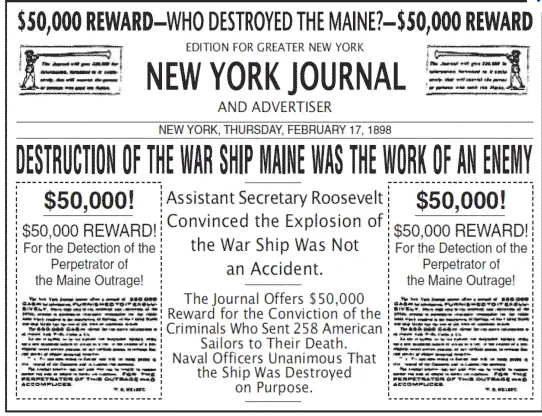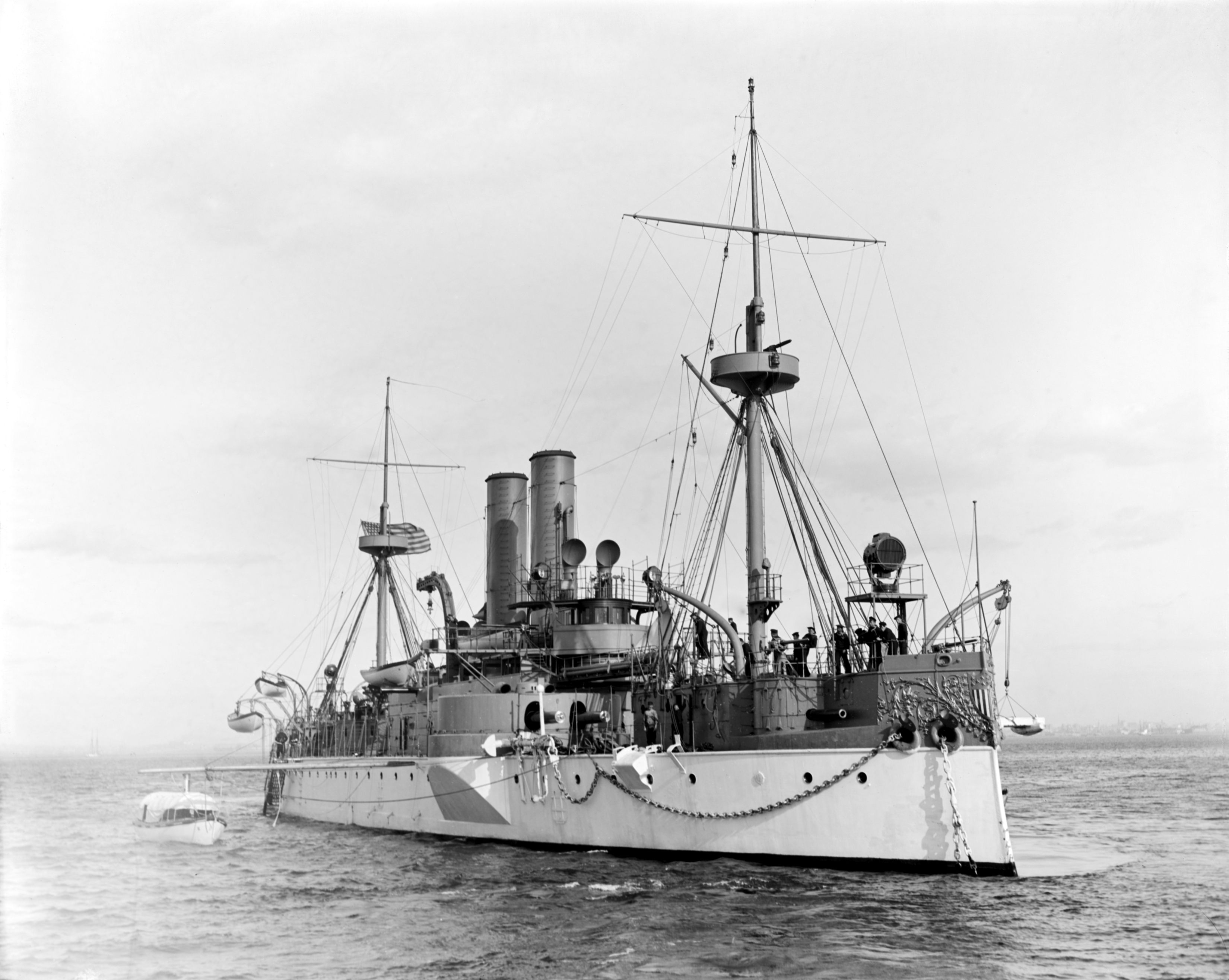The Sinking of the Maine
The battleship was in Cuba’s Havana harbor. At the time, armed guerillas were resisting Spanish rule. Support in the U.S. for Cuban independence was high. A U.S. Naval Court of Inquiry ruled in March that the detonation of a mine caused the explosion that blew up the Maine. The Court of Inquiry did not blame Spain, but plenty of people in America did. Two of the most vocal of those who wanted Spain out of Cuba were newspaper publishers William Randolph Hearst, of the New York Journal, and Joseph Pulitzer, of the New York World.
The mood in much of the country at the time was for the U.S. to flex its muscle, particularly in the wake of reports of atrocities committed by Spanish troops against Cuban resistance fighters. In particular, Spain had sent thousands of captured Cubans to concentration camps, where a great many died of disease and malnutrition. President William McKinley attempted to avoid war. However, Congress declared war on Spain on April 25, in response to a Spanish declaration of war the day before. One of the main proponents of war was Theodore Roosevelt, at the time the Assistant Secretary of the Navy. Roosevelt wanted to experience combat himself and organized a group of volunteers called the “Rough Riders,” a cavalry force that helped American forces seize the San Juan Heights above Santiago, Cuba. Elsewhere, American forces were also victorious, notably in a naval engagement in Manila Bay, with Commodore George Dewey’s ships destroying a Spanish fleet. In the end, the war was short, with an August armistice ending the fighting and a December treaty officially ending the war. America gained control of Guam, Puerto Rico, and the Philippines as a result; Cuba became an independent country.
The Maine got its commission in September 1895. It sailed in the Atlantic Ocean for three years before being sent to Havana in January 1898. In the end, the sinking of the Maine, killing 260 of the 355 onboard, proved a convenient context for inflaming American sentiment against Spain and paving the way to a war between the two countries. Later investigations, including a 1999 National Geographic Society computer simulation, suggested, however, that an internal fire, not an external mine, caused the explosion that sunk the Maine. |
|
Social Studies for Kids
copyright 2002–2025
David White



 Hearst and Pulitzer published many editions of their newspapers with huge photos of the stricken battleship and huge headlines imploring readers to “Remember the Maine!” Later reports confirmed what many people at the time suspected, that the newspapers weren’t exactly printing the truth when it came to information about the Maine and about Spain.
Hearst and Pulitzer published many editions of their newspapers with huge photos of the stricken battleship and huge headlines imploring readers to “Remember the Maine!” Later reports confirmed what many people at the time suspected, that the newspapers weren’t exactly printing the truth when it came to information about the Maine and about Spain. The Maine was one of the first American battleships, built in part in response to the presence of a Brazilian battleship, the Riachuelo, sailing around the Americas. The Maine cost $2 million to build and weighed more than 6,000 tons. At the time, it was the largest ship yet built in a U.S. Navy yard. The ship took nine years to build, mainly because of a delay in delivery of armored plating and a delay caused by a fire that destroyed working blueprints.
The Maine was one of the first American battleships, built in part in response to the presence of a Brazilian battleship, the Riachuelo, sailing around the Americas. The Maine cost $2 million to build and weighed more than 6,000 tons. At the time, it was the largest ship yet built in a U.S. Navy yard. The ship took nine years to build, mainly because of a delay in delivery of armored plating and a delay caused by a fire that destroyed working blueprints.
